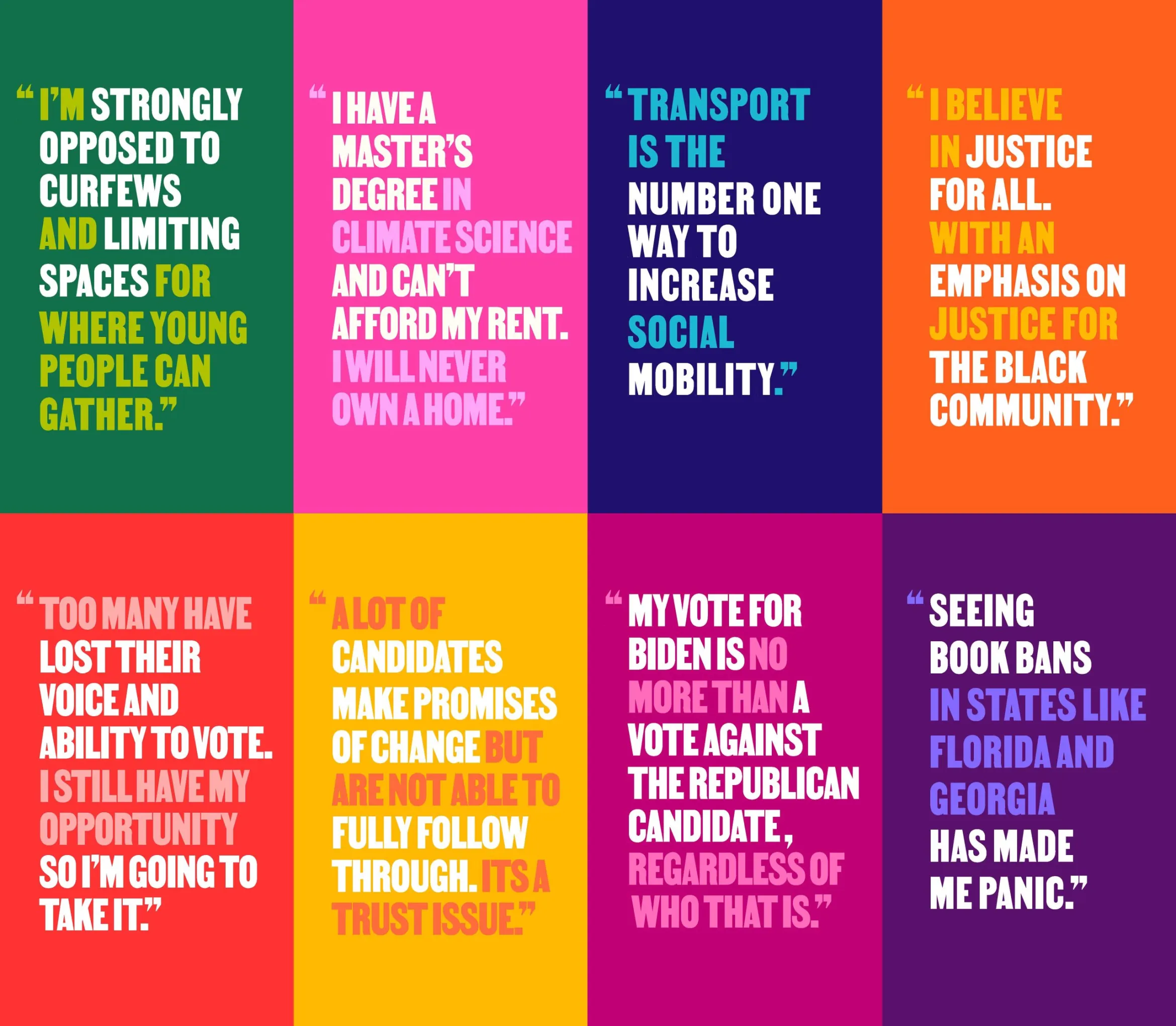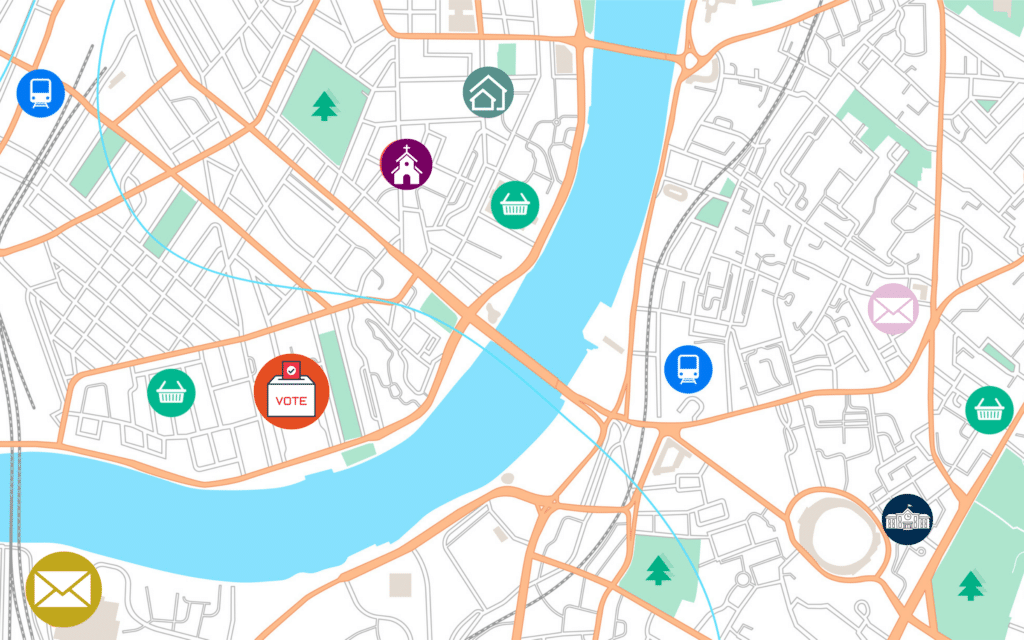
People in power in Baltimore always talk about young people, but very few of them talk to young people.
I’ve been working in Baltimore City for more than 20 years and a common theme — whether it’s election season or not — is what to do about the young people. Even as crime both in Baltimore and across the country has generally dropped, youth violence still remains a problem. Our local television stations often publish sensational stories of crime, with the message that local leaders aren’t doing enough to prosecute young people — even though Maryland already automatically charges a large number of children as adults.
These efforts have paid off. Lawmakers have pivoted to talking about “getting tough” on juvenile crime, while the conditions that cause it remain the same.
With Baltimore Beat, the nonprofit newsroom I founded in 2017, I’ve worked hard to fill the cracks in a media landscape that doesn’t always serve its audience the way it should. Baltimore is 60 percent Black, yet the majority of journalists working in this city are white. Mainstream journalism itself is built on a perspective that doesn’t always serve marginalized communities. At Baltimore Beat, we try to serve missing perspectives that come as a result of that. The work we did with our Youth Voter Guide was no different.
Baltimore is not a media desert, but because of the lack of intentionality around media that serves much of this population, there are so many people who don’t know they need the news. The news has never served them. They might eke out the information that they absolutely need, and their eyes and attention might be caught by fearmongering crime reports, but they don’t truly engage in detail with what is happening in this city. Whether you are talking about residents above or below the age of 18, it’s not acceptable. Society works when we the people build a society that works.
I thought about the bully pulpit that some media owners have and how they can use it to intimidate politicians, often those eager to stay out of the spotlight and hold on to their positions.
I thought about how voter turnout isn’t usually very high in Baltimore. Older people are known to be reliable voters, so candidates mostly target them in their messaging and campaigning.
I thought about how young people in this city often grow up advocating for themselves. Because the schools here are so underfunded, organizations often head to our state’s capital around budget season to advocate for more funding and fight for what they need.
These young people are incredibly bright and have lots to say about what they think about the city, the state and the world. But if candidates are talking about them, through the lens of crime, who is talking to them? I thought this was the kind of work that Baltimore Beat is perfectly positioned to do.
Partnerships to prioritize youth voices
For a little over a year, the Baltimore Beat has been in partnership with several other newsrooms in Baltimore through the Baltimore News Collaborative, funded by the Annie E. Casey Foundation. The goal, as the foundation puts it, is to “raise the voices of the city’s youth, shedding light on the unique challenges they face and those who are navigating solutions.”
I thought that this would be the perfect opportunity to repackage a lot of the work that Baltimore Beat and other members of our collective have already done for people who were looking for more information about what Baltimore is (or isn’t) doing to meet the needs of the city’s young people. We included links to their reporting in the media guide.
One of our partners in the Collective is Wide Angle Youth Media. They describe themselves as an organization that “collaborates with and amplifies the voices of Baltimore youth to engage audiences across social divides. Our programs inspire creativity and instill confidence in young people, supporting them to navigate school, career, and life.”
I asked them to be in charge of the visual design of the issue. The quotes we got from the young people we surveyed — things like “I’m strongly opposed to curfews and limiting spaces where young people can gather,” or “seeing book bans in states like Florida and Georgia has made me panic” — were strong and I wanted to emphasize them visually, but I gave Wide Angle no other instructions. These young people, along with the older adults who help run the program, designed cover drafts that they presented to me and then decided amongst themselves what the final product would look like. It makes me proud that this cover was designed by a young person from Baltimore for young people in Baltimore.

Creating a candidate survey from youth feedback
We worked with Jaisal Noor of Solutions Journalism Network, our program manager, to conduct the outreach work that went into the guide. We hosted two listening sessions: one online and one in person. In those sessions, we asked young people what news they consumed. We also asked them to share their thoughts and concerns about things going on in the city. They told us that they often didn’t feel heard and felt frustrated by some issues in Baltimore. Some told us they wish they knew more about what goes on here.
We also sent out an online survey asking young people to tell us things like whether they planned to vote, what kind of questions they wanted candidates to answer, and what issues are most important to them. We used Baltimore Beat’s social media accounts to spread the word about the survey. Parents and teachers helped spread the survey even further — one teacher told me that they had their class fill it out.
Based on what we learned from the survey, the listening sessions and other research that Noor did with Solutions Journalism Network about young people’s political concerns, we then created a questionnaire for candidates running for public office.
Tips for creating youth-informed voter guides and candidate questionnaires
- Avoid open-ended questions in candidate surveys. We asked candidates open-ended questions that left us — and readers — with a lot of words to wade through. In some cases, some of the candidates’ responses were false. It left my very small staff with a lot of content to wade through, edit and lay out on the page. If we had it to do again, we’d research other ways to get a sense of what candidates believe and think that are less burdensome to publish.
- Get creative with how you share across platforms. In the end, we could only fit all candidates’ responses to just one question in the guide: “If elected, what is the most important thing you can do to improve the lives of youth?” Everything else went online.
- Use your networks and then think beyond them. If I could do this guide again, I’d work harder to use the partners we already know to get a wider range of responses. For example, I would have loved to bring in the young people from Writers in Baltimore Schools. We run poems written by participants in the literary education program in every issue of Baltimore Beat. With our next guide, we are working to list all of the groups we already have relationships with to get as many answers to our youth survey as possible. We are also thinking of ways to reach young people outside of those networks.
- Plan on building those connections year-round. With our guide, we only began forging a relationship with Baltimore’s next generation of readers, thinkers and voters. We don’t want to abandon them until next election season comes around. Think about other ways you can cultivate time and space to listen and create with them throughout the year.
When we talked to young people, we learned that they had no allegiance to any news outlet and very rarely searched for news. This information, also confirmed in nationwide media studies, tells us that the work we have ahead of us will grow engaged readers for the future and grow engaged citizens, too.
The biggest challenge we faced was capacity. If we had more resources, we could have done more — we could have engaged with more young people, spread the word about our survey further, planned more events and even had a bigger guide.
Regardless, this project empowered young people. The people we surveyed felt heard. As we continue this project through the election this fall and in years to come, it will produce a new way of thinking about elections in Baltimore — that candidates must take youth voices seriously. It matters here that no candidate for mayor filled out the survey. It also matters that a good deal of other candidates did — and young people and journalists alike can hold them to their words.
I hope this project united our community. In many ways, we all live segmented lives. Some older people might not have younger people in their lives, and think about them only in the negative ways they are sometimes portrayed. I hope that the youth voter guide educated them about the bright and thoughtful young people who live in this community.
Lisa Snowden is the Editor-in-Chief of Baltimore Beat, a digital and print-based news outlet based in Baltimore City. At Baltimore Beat, Lisa uses decades of experience as a reporter and in leadership to help re-imagine a new approach to news and storytelling.
Share with your network
4 ideas on election engagement that can lead to longer-term relationships
You also might be interested in:
As the American Press Institute marks 80 years, we’ll honor our legacy by continuing to respond to the evolving needs of news leaders. Our upcoming API Local News Summits will explore three critical places where democracy and sustainability intersect.
Reaching younger audiences has long been a challenge for media organizations. As platforms evolve, trust in news shifts and news avoidance grows, it can feel especially difficult to connect with and serve multigenerational audiences in an authentic and sustainable way. How can news leaders do their part to represent and include community perspectives from members of different age groups?
For us, we knew one of our biggest hurdles to success would be challenging the assumptions, both spoken and unspoken, we held for others. Here’s what we’ve learned over the past three years of gathering multigenerational problem-solvers.







